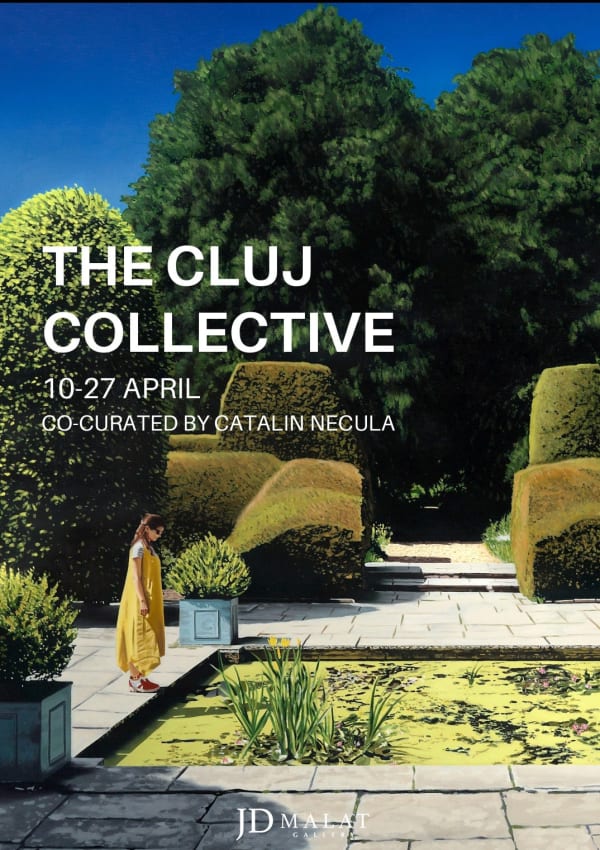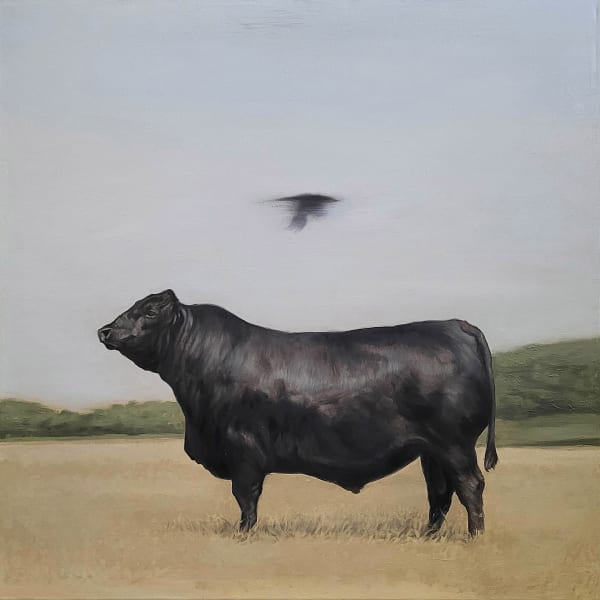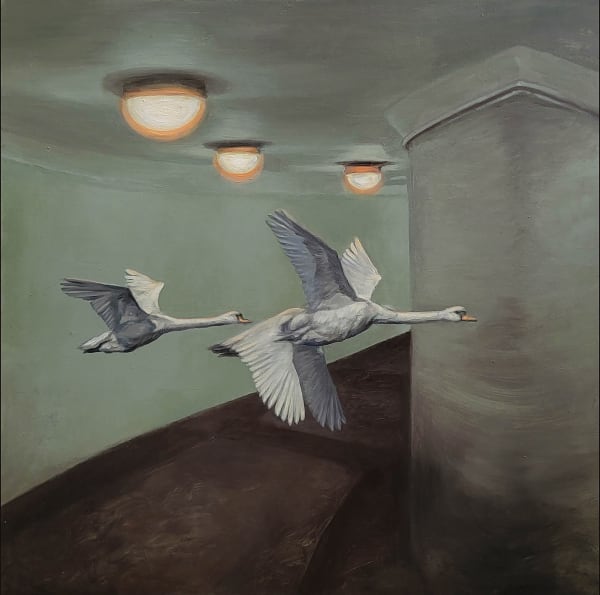Dragoș Bădiță
Dragoș Bădiță (b. 1987) is a contemporary multi- media artist living and working in Bucharest, Romania. Graduated from the University of Art and Design in Cluj- Napoca, Bădiță works mostly in physical media such as oil or ink and recently began experimenting with generative art and animation.
Bădiță's artistic approach stems from an intense awareness of the passage of time, urging him to contemplate the nature of time in our lives. Capturing fleeting moments of everyday life, his textured canvases possess powerful connotations beneath the calm surface, where ordinary, lived moments are charged with existential and sometimes mystical themes and states of mind. The figurative paintings freeze a moment in time, zooming into the underlying psyche of human beings expressed through meticulous details on facial and gestural expressions, as well as poses. By focusing on ephemeral moments, Bădiță highlights the fleeting and ever-changing nature of our experiences.
This distinctive exploration of the transient nature of consciousness connects to a broader reality, contemplating our relationship with the body and the inevitability of decay and dissolution. The metamorphosis of such developments is inevitably governed by time. Bădiță deliberately chooses wood as his base to contrast the expressive vulnerability of the imagery in his paintings with the solid presence of the wood surfaces he paints on, bringing forth a grounded presence in a paradoxically transient subject, simultaneously exploring movement and stagnation in time.
Dragoș Bădiță's exploration of time and space is most evident in his references to different art historical styles and contemporary experimentations. His artistic repertoire harnesses the tropes of Medieval religious paintings, as well as the imaginative work of Flemish and Danish artists, notably Pieter Bruegel and Hieronymus Bosch. Bădiță crafts a visual language with mythological and allegorical
undertones to transcend historical timelines and ask viewers to question their role in the grander narrative of humanity's past, present and future.
-

"The Cluj Collective" | A Group Exhibition at JD Malat Gallery in London
Empower Artists, April 3, 2024 -

7 Cluj Artists Exhibit at JD Malat Gallery in London
Cosmin Nasui, Modernism, March 23, 2024 -

The Cluj Collective: London art gallery hosts group exhibition of seven Romanian artists
Irina Marica, Romania Insider, March 21, 2024







